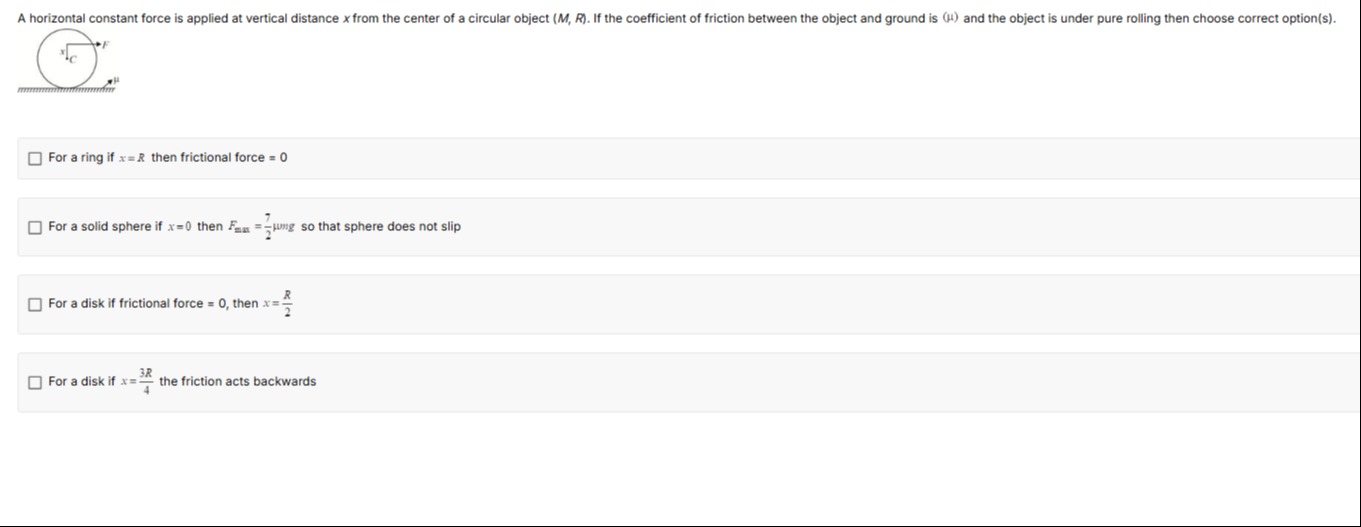Question
Question: A horizontal constant force is applied at vertical distance x from the center of a circular object $...
A horizontal constant force is applied at vertical distance x from the center of a circular object (M,R). If the coefficient of friction between the object and ground is (μ) and the object is under pure rolling then choose correct option(s).

For a ring if x=R then frictional force = 0
For a solid sphere if x=0 then Fmax=27μmg so that sphere does not slip
For a disk if frictional force = 0, then x=2R
For a disk if x=43R the friction acts backwards
Options 1, 2, and 3 are correct.
Solution
We start by writing the two equations for a body rolling without slipping under an applied horizontal force F acting at a vertical distance x from the center.
-
Translation:
ma=F+f
(where the sign of f will be determined by its direction)
-
Rotation about the center:
The torque due to F is Fx and due to friction is −fR (taking the “positive” sense consistent with rolling), so
Iα=Fx−fR
Using the no–slip condition, α=Ra, we get:
IRa=Fx−fR
Now, solving for f:
-
From translation:
a=mF+f
-
Substituting into the rotation equation:
ImRF+f=Fx−fR
Multiply through by mR:
I(F+f)=mR(Fx−fR)
Rearrange to isolate f:
IF+If=mFxR−mfR2
f(I+mR2)=F(mRx−I)
Thus,
f=FI+mR2mRx−I
Note that the sign of f depends on the numerator mRx−I.
Now we analyze the options:
-
For a ring if x=R then frictional force = 0:
For a ring, I=mR2. Then
x=mRI=mRmR2=R
Thus, if x=R then mRR−mR2=0 and so f=0.
Option 1 is correct.
-
For a solid sphere if x=0 then Fmax=27μmg so that sphere does not slip:
For a solid sphere, I=52mR2. For x=0,
f=F52mR2+mR20−52mR2=−F57mR252mR2=−72F
The negative sign shows that friction opposes the applied force F. The maximum friction available is μmg, so to avoid slipping we require
72Fmax≤μmg⟹Fmax≤27μmg
Thus, the maximum force before slipping is indeed 27μmg.
Option 2 is correct.
-
For a disk if frictional force = 0, then x=2R:
For a disk, I=21mR2. The frictionless condition requires:
mRx−I=0⟹x=mRI=mR21mR2=2R
Option 3 is correct.
-
For a disk if x=43R the friction acts backwards:
Again for a disk, with I=21mR2, substituting x=43R gives:
mRx−I=mR(43R)−21mR2=(43−21)mR2=41mR2
which is positive. Thus f is positive, meaning it acts in the same direction as F (not backwards).
Option 4 is incorrect.
